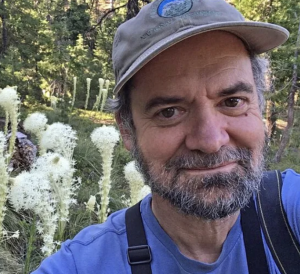Tony Vagneur: Sweet and simple
Today, it seems we increasingly live in a bastion of white privilege and it’s difficult to imagine how quickly things have changed over the years. In my case, years I never thought I’d see, but nonetheless, some of the memories reside with me because of that.
My first home was on the Elkhorn Ranch in Woody Creek. My dad was 26, my mom 20 when I was born (the same year Lifts 1 and 2 were built on Aspen Mountain). It’s difficult to imagine what my parents were thinking when they put it all together; they moved into an old log cabin on the ranch, two rooms downstairs, two up, with a root cellar under the kitchen.
It was heated by two wood burners — the cookstove in the kitchen and the other in what served as the living room. The two upstairs rooms were bedrooms, one for my parents and me in my crib, the other for overnight guests, of which there weren’t very many. The guest room didn’t get much heat in the winter as the kitchen stove went out shortly after bedtime. There was no electricity, no running water, no indoor plumbing. It was housing of the day.
With fondness, I think back to the early evening, when my mom or dad would light the kerosene lamps. They were so beautiful in my memory, something to be looked forward to. Having spent uncountable days at our cow camp, cooking and living with only lanterns for light, and none of the other amenities, I’m somewhat amazed at how my mother managed to get it all done. No washing machine, cloth diapers, and well-worked ranch clothes.
There was no yard. Hayfields came up to the back of the house; the creek was down the hill about a quarter of a mile away. The front had a bit of grass, but it was a wooden walk and mostly dirt in the small area between the house and the irrigation ditch, which ran 12 months of the year. That’s where we got our water, drinking and otherwise, hauled to the house in buckets. There was always a large wood pile out front to fuel the stoves. Between the house and the Woody Creek Road was a small pole barn with a corral, where my dad kept a couple of milk cows.
It was all of that, but the one thing that can’t be quantified is the isolation. In the beginning it must have been a honeymoon cottage, my mom the tender age of 18, my dad excited to have won the hand of one of the most sought-after young ladies in the valley. That can carry you through a lot of inconvenience, I reckon, and then 15 months later, I was born.
We were, as my mother repeated often over the years, 12 miles from town, much of it on rough dirt roads that weren’t high on the list to get plowed in the winter. Unlike many Woody Creatures regularly traveling to town today, going to Aspen in those days was an event, a journey requiring some fortitude.
The nearest neighbors were a mile away in either direction, and none of them compatible with or to my mother’s liking. (One of them was her father-in-law, a tough cookie for her to deal with, the other a family toward Lenado, mother and son who were much older and not exactly sociable.)
My maternal grandmother, who lived in Aspen, came to visit quite a bit, and as I write this, it all makes sense. She was support for my young mother who was no doubt lonely as hell out there, living the supposed coveted country lifestyle, raising a son who even then was a handful. Today, clear in my memory almost as though it was yesterday, is the tapioca pudding my grandmother would make when she came to visit.
It was a social event to go to the Woody Creek Store and Post Office — maybe once a week — you never knew who you might see, and Prue Bogue, who owned the store with her husband, Jess, might have you into their attached apartment for a cup of tea and a visit. Norman Smallwood, my last living link with that era, a close ranch neighbor and young man at the time, remembers seeing my mother at the store.
Our housing in Woody Creek was not all that different from several other ranchers, including a few houses in Aspen, as well. In 1949, my parents built a new log house, about a half-mile away, one that had running water and indoor plumbing. It should be noted, however, that electricity did not come to the Woody Creek Canyon until 1952. The isolation remained.
Years later, my father and mother, in separate conversations, both told me that, on some level, they missed those days and the simplicity that went with them.
Tony Vagneur writes here on Saturdays and welcomes your comments at ajv@sopris.net.




